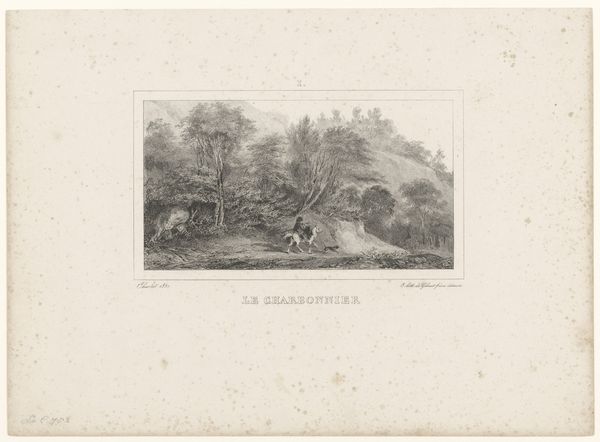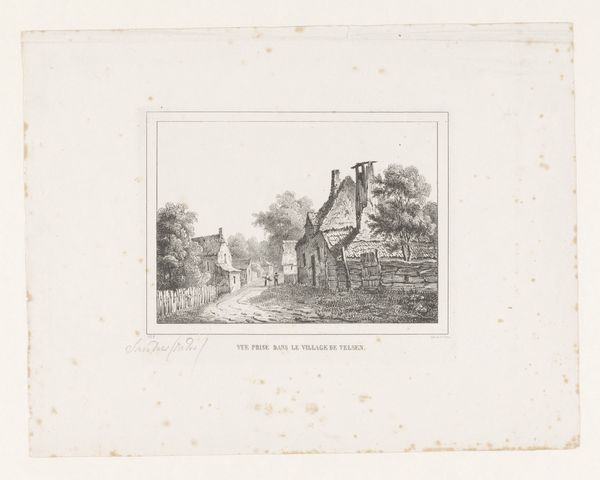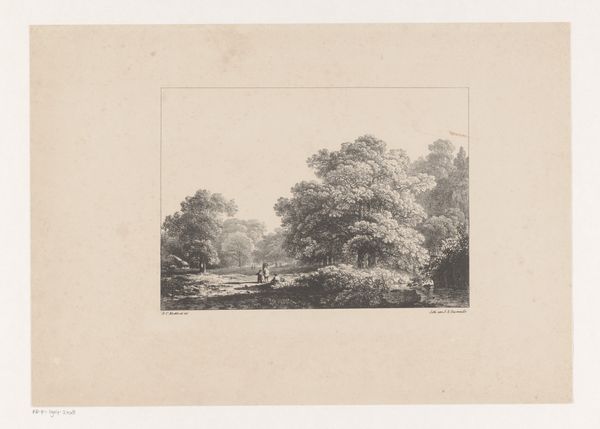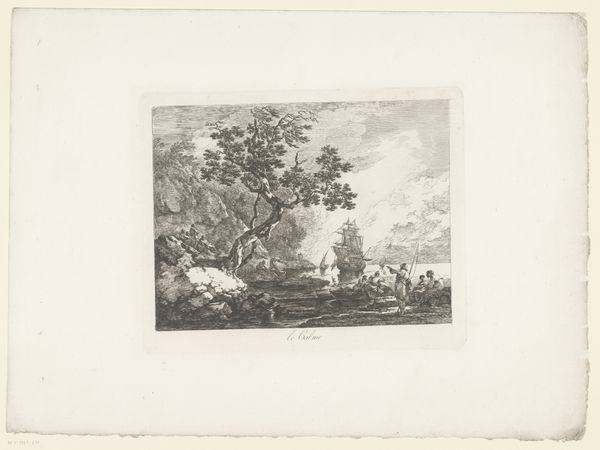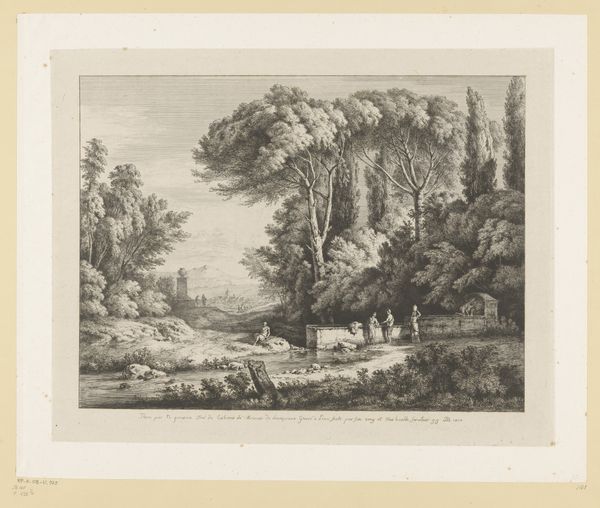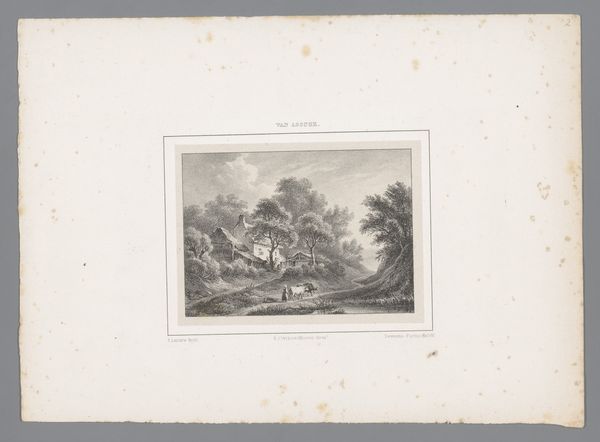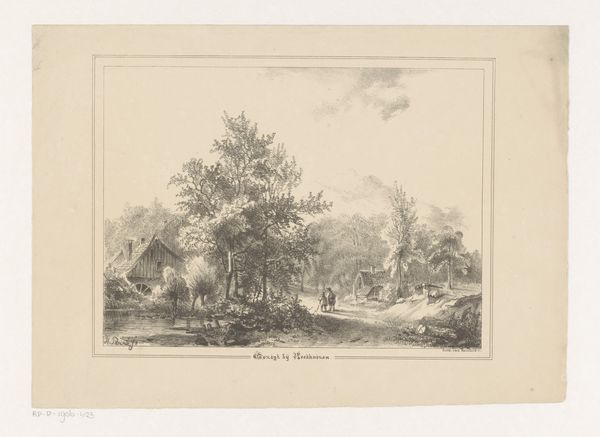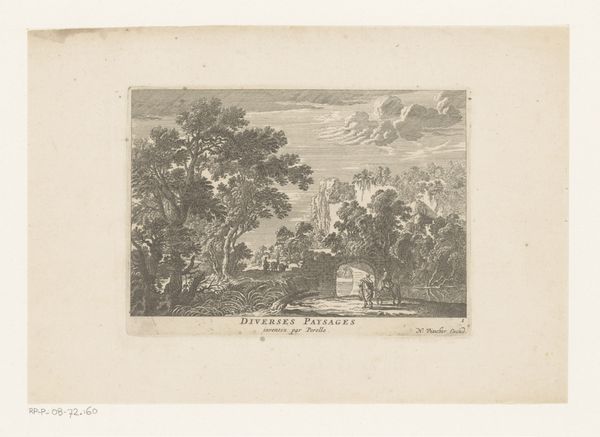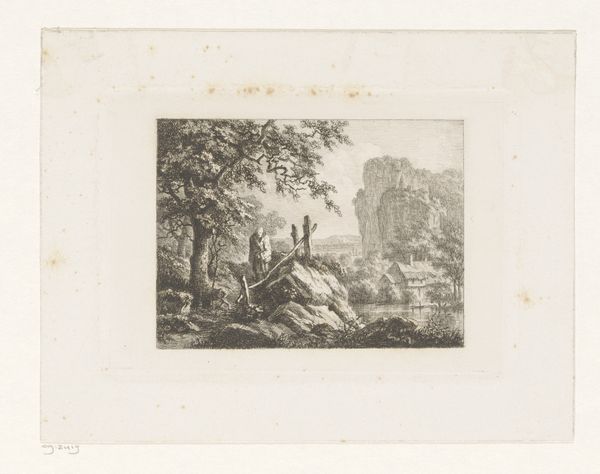
print, etching
#
dutch-golden-age
# print
#
etching
#
landscape
#
genre-painting
#
realism
Dimensions: height 188 mm, width 280 mm
Copyright: Rijks Museum: Open Domain
Editor: Here we have "Landschap met boerderij," or "Landscape with Farmhouse," an etching by Willem Hendrik Stam, dating somewhere between 1841 and 1874. The delicate lines and use of light give it a wonderfully serene feel. What stands out to you in terms of its construction? Curator: I'm drawn to how this print collapses traditional hierarchies between art and craft. Etching, as a reproductive medium, often served to disseminate images, making art accessible beyond elite circles. Editor: So, its value lies not just in the image itself, but in its role in society? Curator: Precisely. Consider the labor involved in its production. Stam, the artist, but also the printers, the distributors. This etching highlights the often-invisible work behind art's accessibility, circulating visual information and ideas among a growing public, especially with the rise of the middle class and their hunger for images. Where does that hunger stem from, do you think? Editor: Perhaps a desire to own or experience something beautiful, even in a reproduced form? A yearning for something more? Curator: Exactly! But let's not forget the raw materials: the copper plate, the inks, the paper. How do these tangible elements shape the final artwork, and its perception? Editor: I never really thought about art in terms of the labour and materials it takes to create; I was always focused on its aesthetic appeal. Curator: Considering these processes allows us to challenge notions of artistic genius and authorship, highlighting the collective effort inherent in art production and consumption. I have new found appreciation for etching. Thanks!
Comments
No comments
Be the first to comment and join the conversation on the ultimate creative platform.
